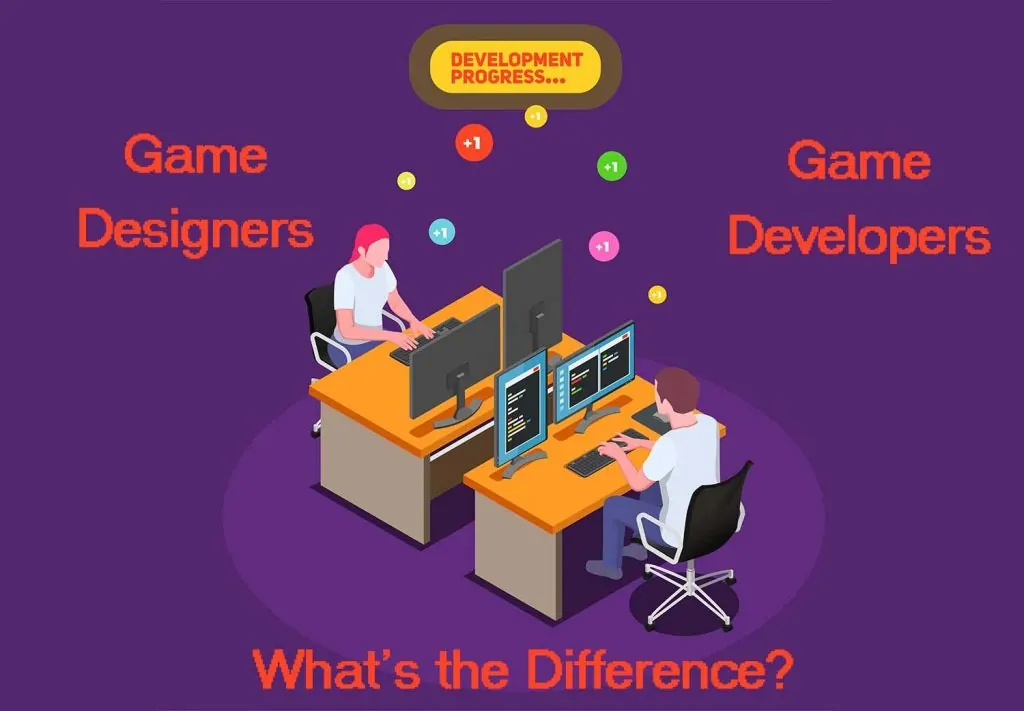The world of gaming is full of creativity, innovation, and technology — all coming together to deliver immersive experiences to players around the globe. However, one common point of confusion among newcomers and even aspiring professionals is the distinction between game design and game development.
Although these two roles work hand in hand to bring a game to life, they serve entirely different purposes. Understanding the difference between game design and game development is crucial for anyone who wants to pursue a career in the gaming industry, start a studio, or simply understand how their favorite games are made.
In this blog, we’ll break down the key differences between game design and game development, explore the skills, responsibilities, and tools involved in each, and explain how both contribute to creating a successful game.
What Is Game Design?
Game design is the creative foundation of a video game. It’s all about conceptualizing the gameplay experience, defining the mechanics, and crafting the story, characters, and world that make the game engaging.
A game designer focuses on answering key questions like:
-
What is the goal of the player?
-
How does the game progress?
-
What challenges or rewards keep players engaged?
-
What emotions should the player feel while playing?
Essentially, game design is about creating the blueprint for the game before any code or artwork is produced. It’s where the vision for the game is formed and documented.
Core Responsibilities of a Game Designer
-
Gameplay Mechanics: Defining how players interact with the game environment.
-
Storytelling: Writing the game’s narrative, dialogue, and character backstories.
-
Level Design: Designing the maps, missions, and environments for progression.
-
Player Experience (UX): Ensuring the game feels intuitive, balanced, and enjoyable.
-
Rules and Balancing: Setting the rules of the game, difficulty levels, and rewards system.
Skills Required for Game Designers
-
Creativity and imagination
-
Strong storytelling abilities
-
Analytical and problem-solving skills
-
Basic knowledge of programming or scripting
-
Understanding of psychology and player motivation
Popular Tools for Game Design
-
Unreal Engine Blueprints
-
Unity Visual Scripting
-
Adobe Photoshop & Illustrator (for conceptual art)
-
Tiled (for 2D level design)
-
Miro / Figma (for flowcharts and wireframes)
Game designers are the architects of the gaming experience — they plan what the game should look and feel like long before it’s actually developed.
What Is Game Development?
While game design focuses on ideation and creativity, mobile game development is the technical execution of those ideas. It involves coding, programming, and implementing the designer’s vision to create a functional and playable game.
A game developer turns the game design document into reality using programming languages, development engines, and technology stacks. Developers ensure that characters move, environments load, sounds play correctly, and gameplay mechanics operate smoothly.
Core Responsibilities of a Game Developer
-
Programming and Coding: Writing code that defines gameplay logic, controls, and interactions.
-
Integration: Combining art, animation, sound, and game mechanics into one cohesive product.
-
Testing and Debugging: Identifying and fixing bugs to ensure smooth performance.
-
Optimization: Ensuring the game runs efficiently across different platforms and devices.
-
Maintenance: Updating and patching games post-launch to fix issues or add new content.
Skills Required for Game Developers
-
Proficiency in programming languages like C++, C#, or Python
-
Familiarity with game engines (Unity, Unreal Engine, Godot)
-
Strong math and physics knowledge
-
Problem-solving and debugging skills
-
Collaboration with designers, artists, and QA testers
Popular Tools for Game Development
-
Unity (ideal for 2D and mobile games)
-
Unreal Engine (popular for AAA and 3D games)
-
Godot (open-source alternative for indie developers)
-
Visual Studio / Rider (for coding)
-
GitHub (for version control)
Game developers are the builders of the gaming experience — they write the code that brings ideas, visuals, and sound together into an interactive digital world.
How Game Designers and Developers Work Together
Although their roles differ, game designers and developers work closely throughout the entire game production cycle. One cannot succeed without the other.
Here’s how they collaborate step by step:
Stage 1: Concept and Planning
Designers come up with the game concept — setting, story, and core mechanics. Developers participate in discussions to ensure that ideas are technically feasible.
Stage 2: Prototyping
Designers create early prototypes to test gameplay ideas. Developers help turn these prototypes into basic, playable builds.
Stage 3: Production
Designers finalize the game’s structure, while developers implement all features, write the game’s code, and integrate assets.
Stage 4: Testing
Designers check gameplay balance and player experience, while developers fix bugs, optimize code, and prepare for release.
Stage 5: Launch and Post-Launch
Designers may create new levels or expansions, and developers release updates or performance patches based on user feedback.
In essence, designers provide the vision, and developers provide the execution. Both roles are vital to a successful gaming experience.
Key Differences Between Game Design and Game Development
| Aspect | Game Design | Game Development |
|---|---|---|
| Focus Area | Creative concept and gameplay experience | Technical implementation and programming |
| Primary Goal | Define how the game looks, feels, and plays | Build a functional, playable game |
| Tools Used | Photoshop, Miro, Unreal Blueprints, Figma | Unity, Unreal Engine, Visual Studio |
| Output | Game design document, levels, mechanics | Playable version of the game |
| Required Skills | Creativity, storytelling, psychology | Coding, debugging, logic |
| Team Members | Designers, artists, writers | Programmers, testers, engineers |
Both roles are interdependent, and a successful game requires perfect synergy between creative and technical minds.
Why the Difference Matters for Businesses
For businesses looking to create a mobile game, understanding the difference between game design and game development is essential when hiring or outsourcing.
If you’re planning to build a game, you’ll need both game designers to conceptualize and plan your game, and developers to bring it to life. Working with a professional mobile game development company ensures that both creative and technical aspects align seamlessly to deliver a high-quality product.
Such companies typically offer comprehensive mobile game development services — covering everything from concept creation and design to development, testing, and deployment. This integrated approach ensures your game not only looks great but also performs flawlessly on all devices.
Conclusion
While game design and game development are often used interchangeably, they represent two distinct yet complementary pillars of the gaming industry.
-
Game design is about what the game is — its concept, story, and user experience.
-
Game development is about how the game works — its code, physics, and functionality.
Both are critical to delivering a memorable and successful game. Without creative design, a game lacks direction; without technical development, it remains just an idea.
Whether you’re an aspiring designer, a budding developer, or a business looking to create your next big gaming hit, understanding this distinction can help you make smarter decisions, build better teams, and bring truly immersive experiences to life.
Final Thought:
The gaming world thrives on collaboration between creativity and technology. When designers dream and developers build — that’s when magic happens.



Leave a Reply